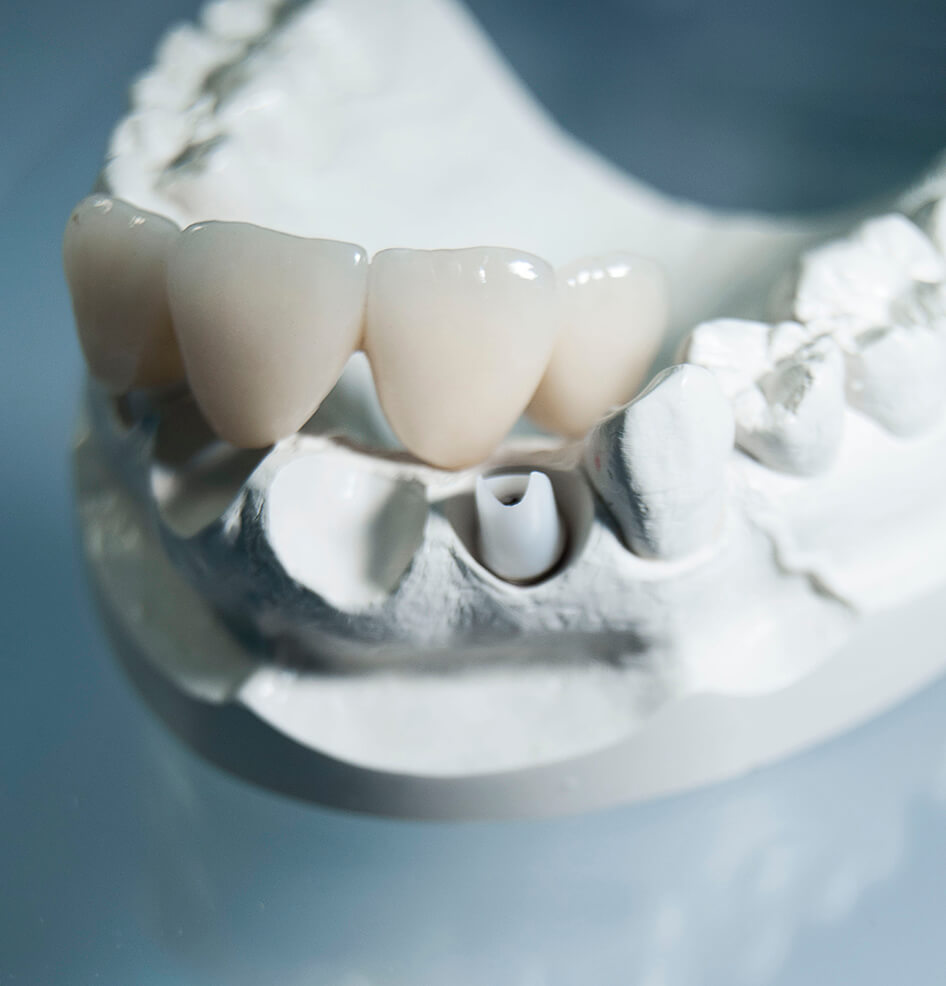

In the modern dental industry, there are countless ways to ensure that your smile looks and feels as natural as possible. Two common methods of restoring damaged, decayed or non-vital teeth are crowns and bridges. Many people are familiar with the terms crown and bridge, but most do not know exactly what the treatment entails, or what they can expect. Continue reading for more information on crowns and bridges.
WHAT ARE CROWNS?
Crowns are essentially "caps" that are fabricated to fit perfectly over a tooth in order to protect it and make it stronger or more esthetic. Crowns can be fabricated from a number of different materials, but most modern crowns are made of porcelain or zirconia to ensure its durability and strength. Modern crowns are expertly crafted to not only match the color, but the shape and size of your natural teeth, as well. To the naked eye, modern crowns are virtually impossible to spot.
When the decay in a tooth has reached a certain point, the dentist will no longer recommend a simple filling to salvage the tooth. Instead, the dentist will recommend that a large filling, known clinically as a "buildup", be placed inside the tooth. The tooth will then be filed down on all sides about a millimeter or two. Shaving the tooth down is done in order to make the natural tooth structure smaller, so that a crown can be placed directly over top.
The process of fabricating and cementing a crown is usually done within two appointments. During the first appointment, the dentist will place the buildup inside the tooth and file the tooth down. A precise impression will be taken of the prepared tooth and the impression will be sent out in the mail to a lab that will fabricate the crown. A temporary crown will also be fabricated out of a resin material in order to complete the patient's smile and fill the space in the meantime.The permanent crown will return within two weeks. The patient returns to have the temporary crown removed, and the permanent crown cemented.
WHAT ARE BRIDGES?
A bridge is essentially just a three-or more- unit crown. In the case that there is a missing tooth in the mouth, patients have the option of filling that space with an artificial tooth that is suspended between two "anchor" teeth. Bridges are an alternative to having an implant placed, but there is one drawback; in order to place a bridge, the two anchor teeth must be filed down a millimeter or two and prepared to have the bridge placed over top. The process of placing a bridge in the mouth is essentially the same as a crown preparation and placement. In some cases, the two anchor teeth on either side of the missing tooth are completely healthy, and the placement of the bridge weakens the two perfectly healthy teeth. It is for this reason that dentists always suggest having a single implant placed, with bridges as an alternative treatment option.
Going forward with the information you learned here, you will be able to better understand your treatment options. Discuss your options with your dentist to determine if a crown or bridge would be right for you!

514 504 - 3368
(DENT)
Walking Distance From Concordia and McGill Universities, as well as many other colleges
Walking Distance From Concordia and McGill Universities, as well as many other colleges



